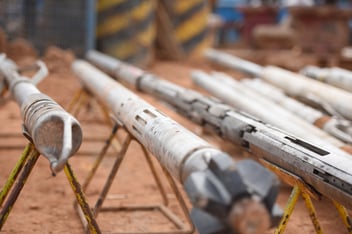Chemical Vapour Deposition (CVD) coatings provide exceptional wear, corrosion and erosion resistance, along with the ability to uniformly protect complex geometries. Traditionally, however, the high process temperatures required by CVD (often nearing 1000°C) have limited its wider adoption, particularly for temperature sensitive components and materials.
Fortunately, recent advancements in low-temperature CVD technology have unlocked new opportunities and benefits for engineers, delivering the same superior coating performance with dramatically improved practicality and sustainability.
The challenge with traditional CVD coatings
Conventional CVD processes typically operate at temperatures ranging between 900–1100°C. While effective for depositing high-performance coatings, this elevated temperature introduces significant constraints.
- Material limitations: Many engineering materials, especially high-strength steels, copper alloys and certain precision-finished components, cannot tolerate such extreme temperatures. Exposure to traditional CVD temperatures can lead to thermal degradation, softening and expansion, compromising mechanical properties and dimensional accuracy. Thin wall components are also more likely to be distorted by high temperature CVD due to the thermal expansion/contraction mismatch of the coating and the base metal.
- Restricted applications: These temperature constraints often force engineers to seek alternative (and usually inferior) coating solutions. While thermal spray and PVD coatings offer some level of surface protection, they fall short in areas such as internal surface coverage, uniform thickness and long-term corrosion resistance.
- Infrastructure complexity: Achieving and maintaining such high process temperatures requires substantial energy input and heavy-duty reactor insulation, making traditional CVD expensive and less scalable for high-volume production.
The innovative features of low-temperature CVD
Low-temperature CVD technology represents a transformative advancement in the coating’s technology.
Sustainability - low energy consumption and environmental compliance
Low-temperature CVD operates at 450–500°C, less than half the temperature of traditional CVD systems. This dramatic reduction in temperature translates directly into various benefits and aligns with global sustainability agendas without compromising on coating performance.
- Lower energy consumption, making the coating process significantly more energy-efficient and cost-effective.
- Reduced CO₂ emissions, helping manufacturers meet stricter sustainability targets and environmental regulations.
- REACH compliance, avoiding the use of hazardous substances such as hexavalent chromium, making it a more environmentally friendly alternative to legacy coatings like hard chrome plating.
Accessibility - providing CVD for temperature sensitive components
By reducing the process temperature, low-temperature CVD technology dramatically expands the range of materials that can be safely coated.
- High-strength and tool steels that would otherwise lose hardness or warp under traditional CVD temperatures.
- Components with tight tolerances or complex geometries that require protection without post-process reshaping or reworking.
- Metals and alloys with low plastic deformation temperatures (such as copper), which would previously have been at risk of structural damage.
More components across aerospace, energy, flow control and advanced engineering industries can now benefit from the superior protection of CVD coatings without compromise.
Control - enhanced uniformity and precision
Operating at lower temperatures also improves process stability and coating precision in several key ways. Reduced thermal gradients across the coated load mean more consistent temperature distribution, which translates to uniform coating thickness across internal and external surfaces. Lower temperatures also mean better control of grain growth, enabling a more predictable microstructure and improved mechanical performance.
Leading the way in low-temperature CVD innovation
Low-temperature CVD is redefining what’s possible in surface engineering. It delivers exceptional coating performance whilst solving the long-standing challenges of traditional high-temperature processes. By dramatically reducing energy consumption, expanding compatibility to temperature sensitive materials, and offering greater precision and control, it provides a smarter, more sustainable way to protect critical components.
At the forefront of this innovation is Hardide. Our advanced tungsten carbide coatings are trusted by industries from aerospace to energy, delivering the hardness, toughness and corrosion resistance needed for extreme environments, without the compromises of heat-induced distortion or environmental risk.
Want to explore how low-temperature CVD could transform your components? Download our guide to learn how Hardide’s coatings are enabling better performance, longer life and lower impact across industries.







